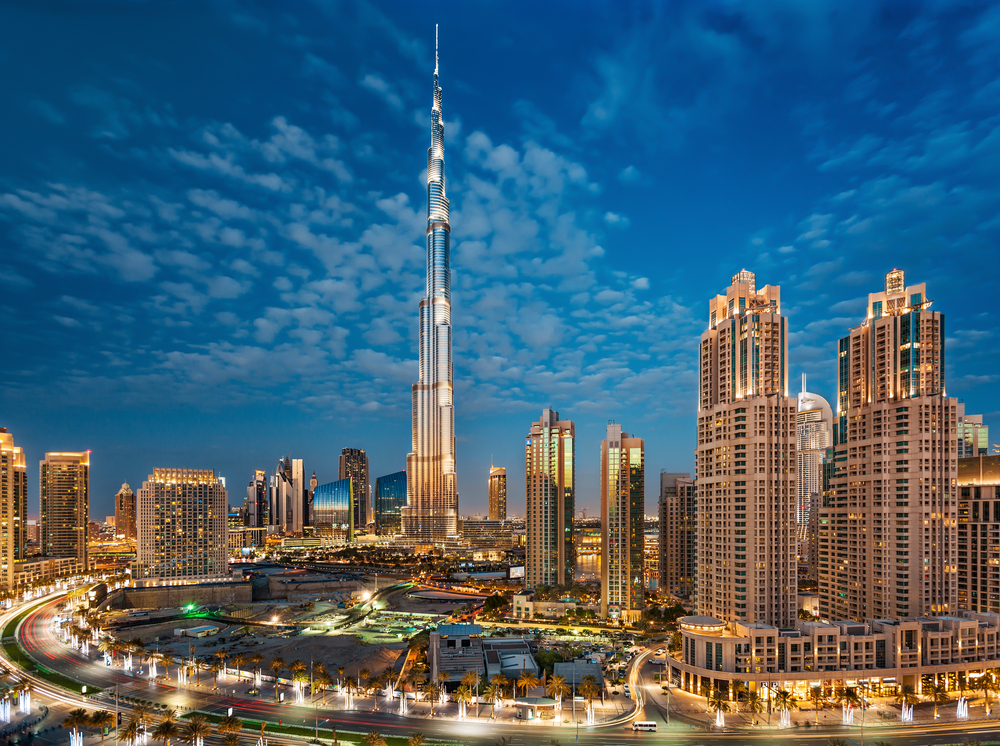Concrete’s incredible strength means it forms the foundations and structure of some of the world’s most striking buildings from tall towers and dams to huge sports stadia.
Here are ten of the best:
1. Burj Khalifa, Dubai
Widely accepted as the world’s tallest manmade structure at 2,717 feet (828 m) tall with more than 160 storeys. It sets all kinds of records: highest occupied structure in the world, elevator with the longest travel distance in the world and highest occupied floor in the world amongst others.
It used some 370,000 cubic metres of concrete in total including 45,000 for the foundation alone. The building took five years to build and opened in January 2010.
2. Causeway Bridge, Louisiana, United States of America
This bridge, completed in 1956, spans Lake Pontchartrain and is actually made of two bridges crossing the lake. The longer of the two stretches to nearly 24 miles, making it the longest bridge in the world covering an expanse of water.
The bridges are held up by over 9,000 concrete pilings although it is only 16 feet above the water level. It also earns a reputation for being one of the most intimidating bridges to cross since, once you’re 8 miles along it, there’s no land in sight in either direction.
3. The Grand Dixence Dam, Switzerland
One of the largest concrete structures anywhere in the world and definitely the world’s tallest dam. The 935 foot high structure used 6 million cubic metres of concrete in its construction which holds back the pressure of 400 billion cubic metres of water.
The dam also fuels 4 hydro electric power stations which can power 400,000 homes combined.
4. Konzerthaus Blaibach, Bavaria, Germany
This concert hall, half underground with just a tilted granite block showing above ground, possesses superb acoustics thanks to its careful design and specially profiled ceilings and walls. The hall is entered via a staircase that takes the visitor underground to the foyer and restrooms – the idea being that it was felt preferable to have a new structure mostly hidden away rather than clashing with the quaint village’s architecture.
The architect, Petel Haimerl, chose concrete mainly because of its acoustic properties. The modestly-sized auditorium seats just 200 – although that’s one tenth of the small village’s population.
5. Petronas Twin Towers, Kuala Lumpar, Malaysia
This striking structure is the world’s tallest twin tower structure. They are also amongst the heaviest with foundations to a depth of 120 metres.
The two 88-floor towers are constructed mostly of reinforced concrete with a glass and steel facade. Concrete was mainly used as it proved less expensive to import than steel and has very good anti-sway properties for such tall and slender structures.
6. The Pentagon, Washington DC, United Sates of America
The HQ of the US Department of Defence building houses over 20,000 workers. In a strange coincidence, construction on the Pentagon started on September 11th 1941, exactly 60 years to the day before a plane struck the building as part of the terrorist attacks of September 11th 2001, necessitating repair work.
The unique five-sided building is made of 410,000 cubic yards of concrete which in turn came from some 700,000 tons of sand dredged from the Potomac River.
7. The Panama Canal, Panama
The story of the construction of this 51 mile long canal linking the Atlantic to Pacific Oceans makes for fascinating reading. Over 5,000 workers died in its construction between 1907 and 1914, and it’s claimed some 3,000 tons of concrete were used per day. The lock walls, made of concrete, are as high as a ten storey building and around 230 million tons of cargo are transported along it every year.
Before its construction, ships had to travel some 8,000 nautical miles to get from one side of America to the other.
8. The Pantheon, Rome, Italy
Built almost 2,000 years ago and still in use today, it is the largest unreinforced concrete dome in the world. The pediment was constructed from over 4,500 metric tons of concrete and it remains as one of the best preserved ancient Roman buildings in the world.
9. The Hoover Dam, Arizona and Nevada border, United States of America
One of the most enduring and famous concrete structures in the world, the Hoover Dam – weighing 6.6 million tons – has become something of a tourist attraction since its construction between 1931 and 1936 during the Great Depression.
Located 35 miles from Las Vegas and on the border of Nevada and Arizona, visitors can effectively walk from one state to the other by crossing the 1,900 foot long bridge. The Hoover Dam was named after America’s 31st president, Herbert Hoover, who helped settle the nearby states’ arguments about water allocations.
The Hoover Dam stands 725 feet above the Colorado River and produces some 4 billion kilowatts of electricity a year making it one of the country’s largest hydroelectric power producers.
10. King Fahd Causeway, Saudi Arabia and Bahrain
This 17 mile long causeway connecting Saudi Arabia and Bahrain and opened in 1986. Comprising of two segments, the structures cross the Gulf of Bahrain and carries around 45,000 vehicles a day with more – some 60,000 – at weekends.
It took four years to build, and over 500 pre-stressed concrete piles were put in and some 350,000 square metres of concrete were used in all.
Concrete is one of the most versatile construction materials and as demonstrated here, it can last for centuries to produce some of the world’s most impressive structures.
Nick Carr is the director of Reinforced Concrete Solutions, a specialist in all types if reinforced concrete construction. His company works on complex schemes and methods without compromising the quality and finish.
